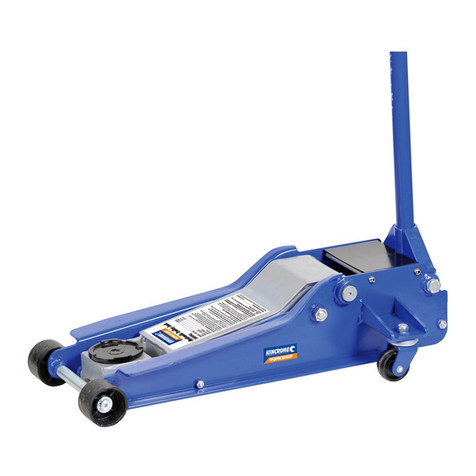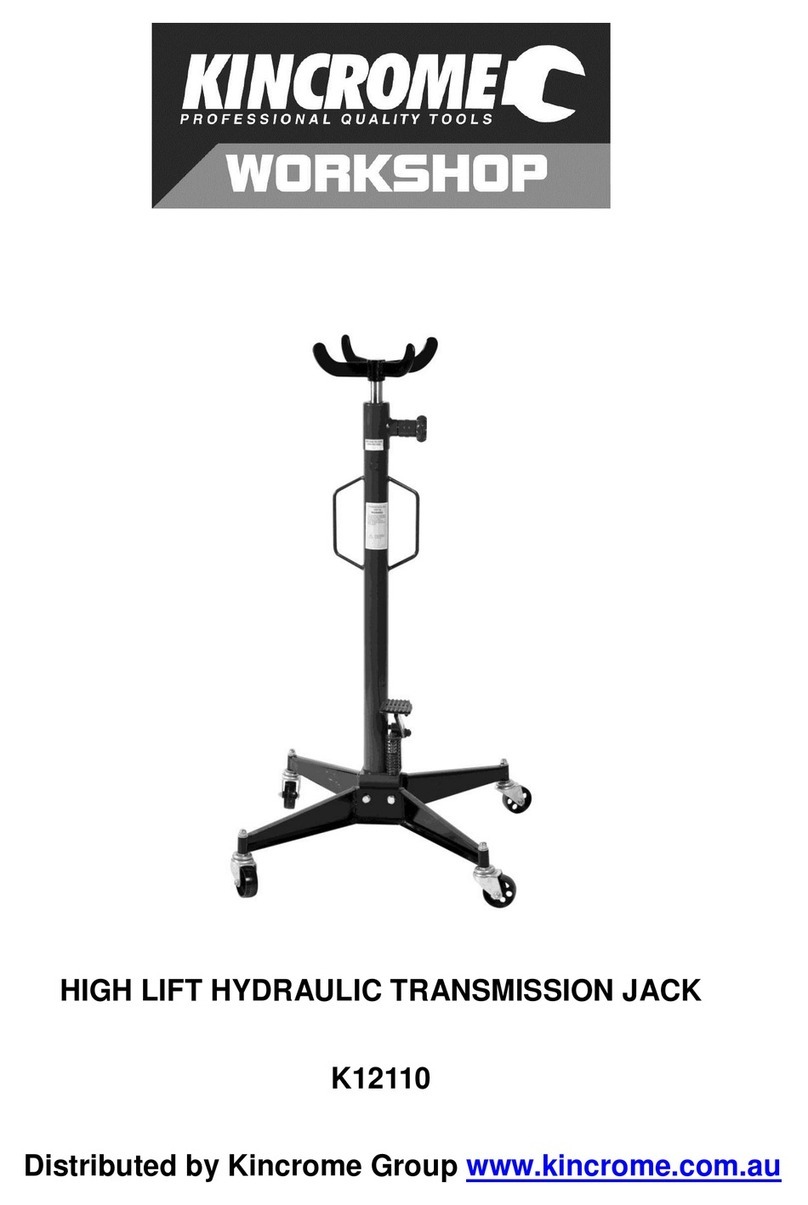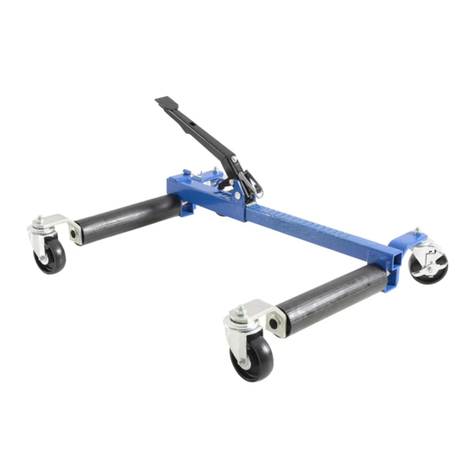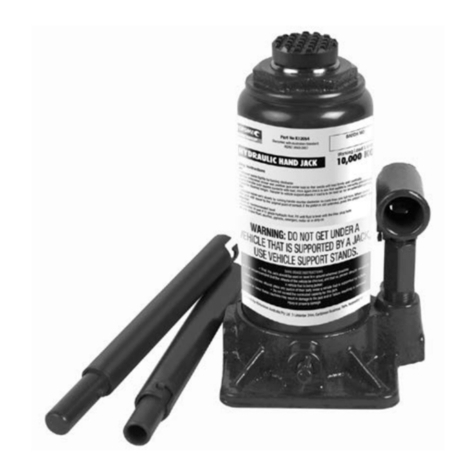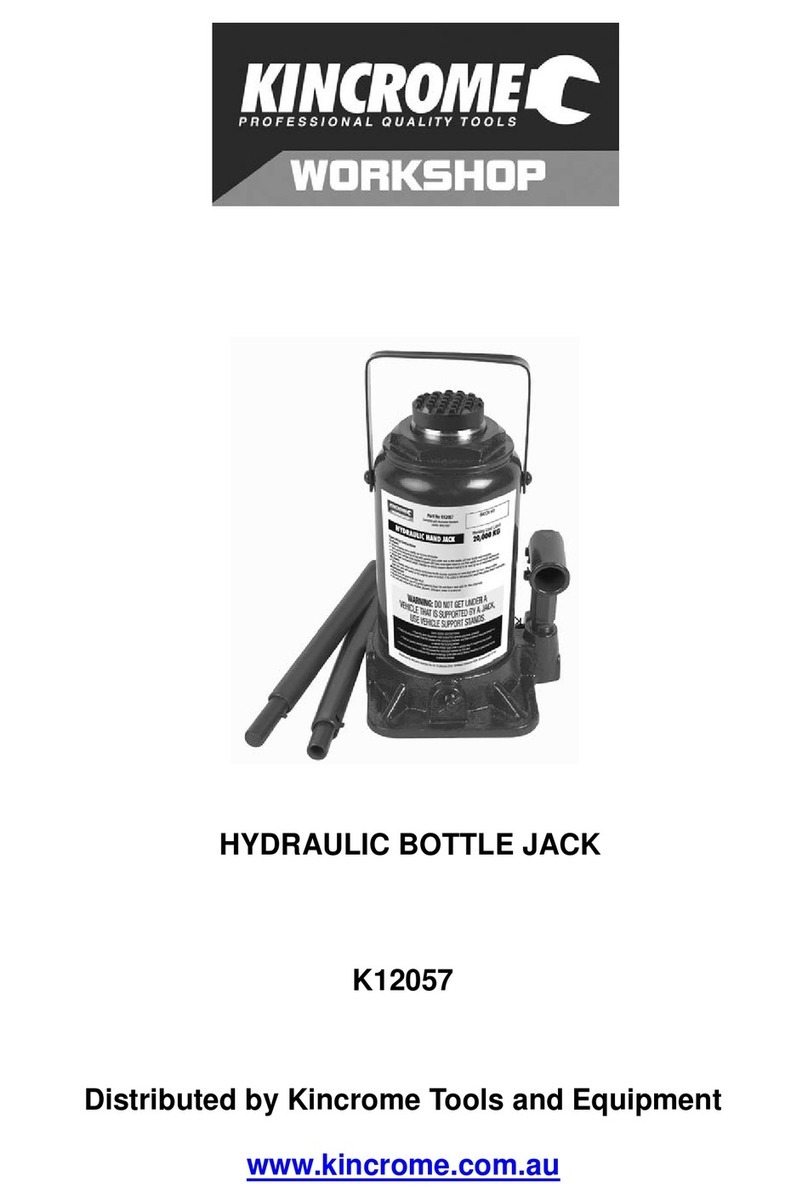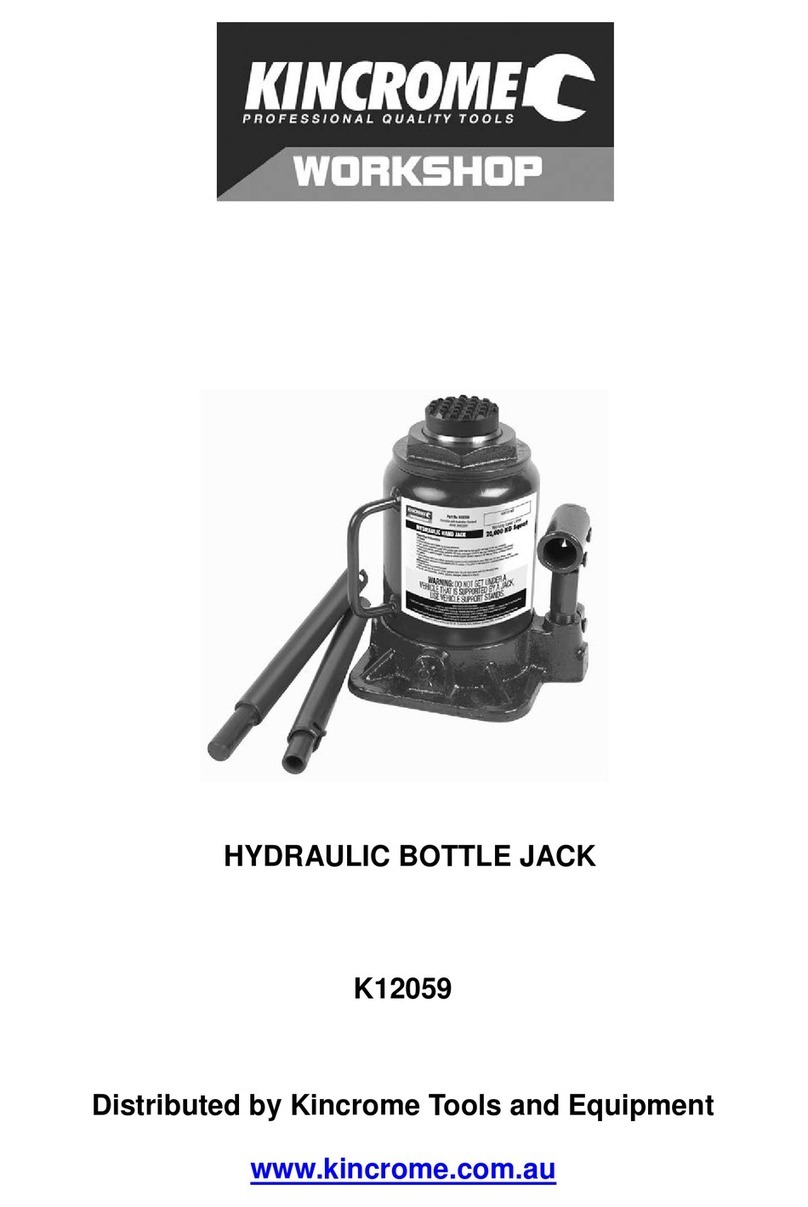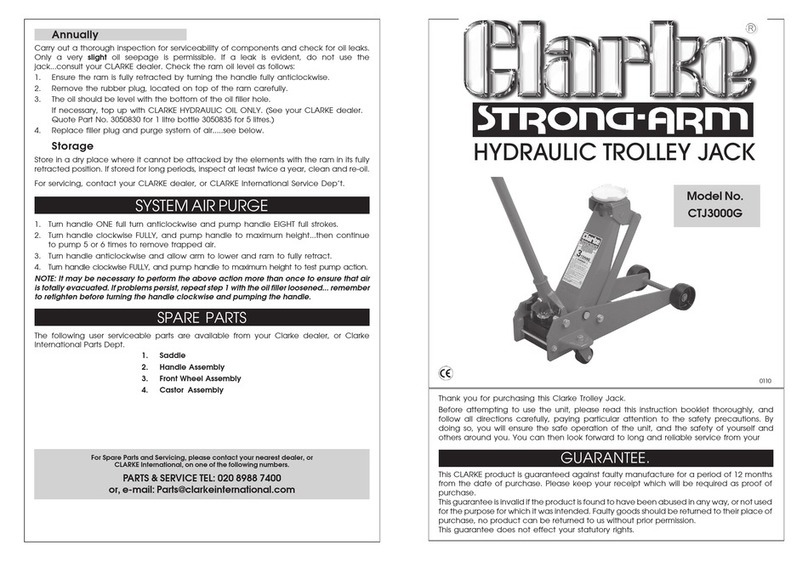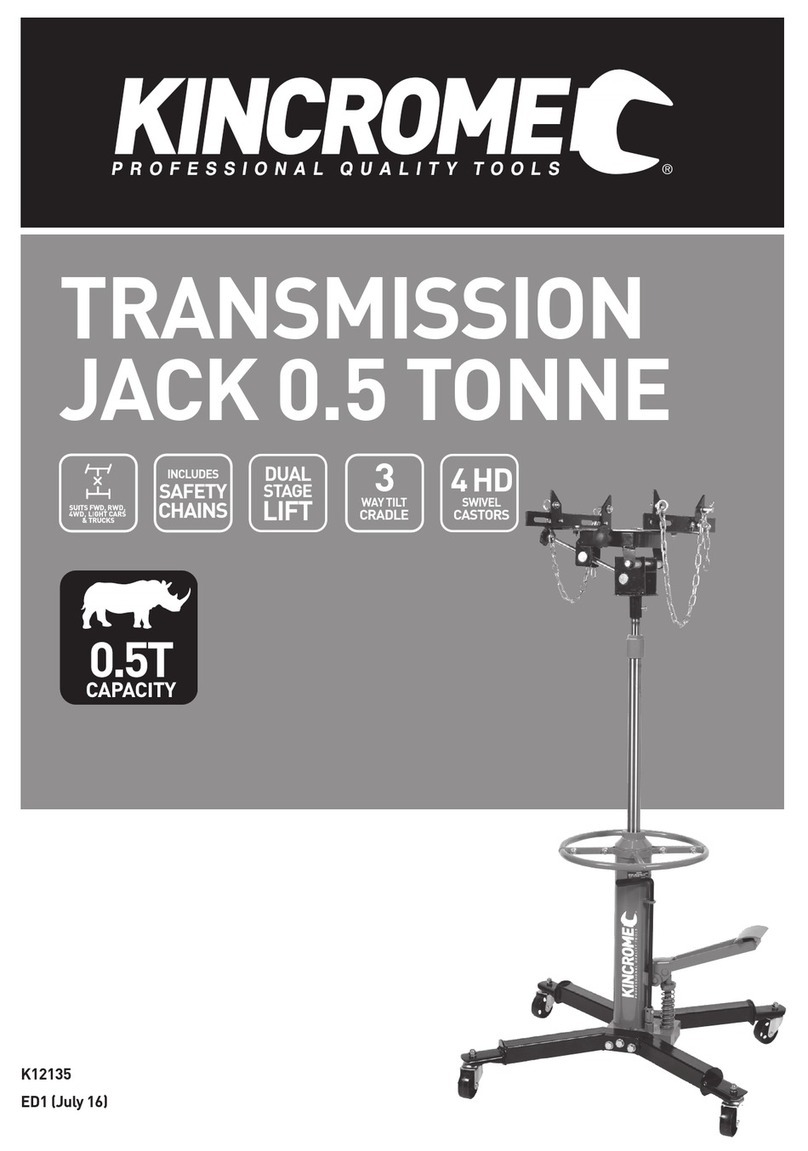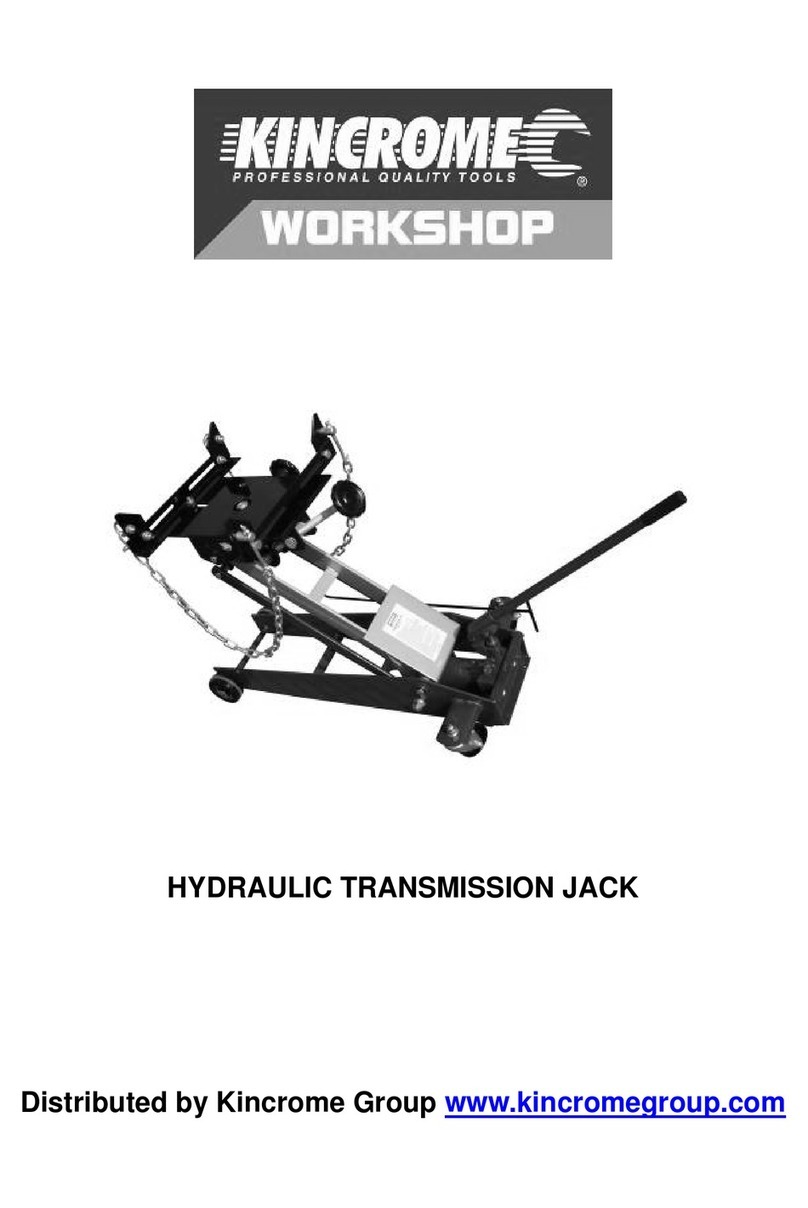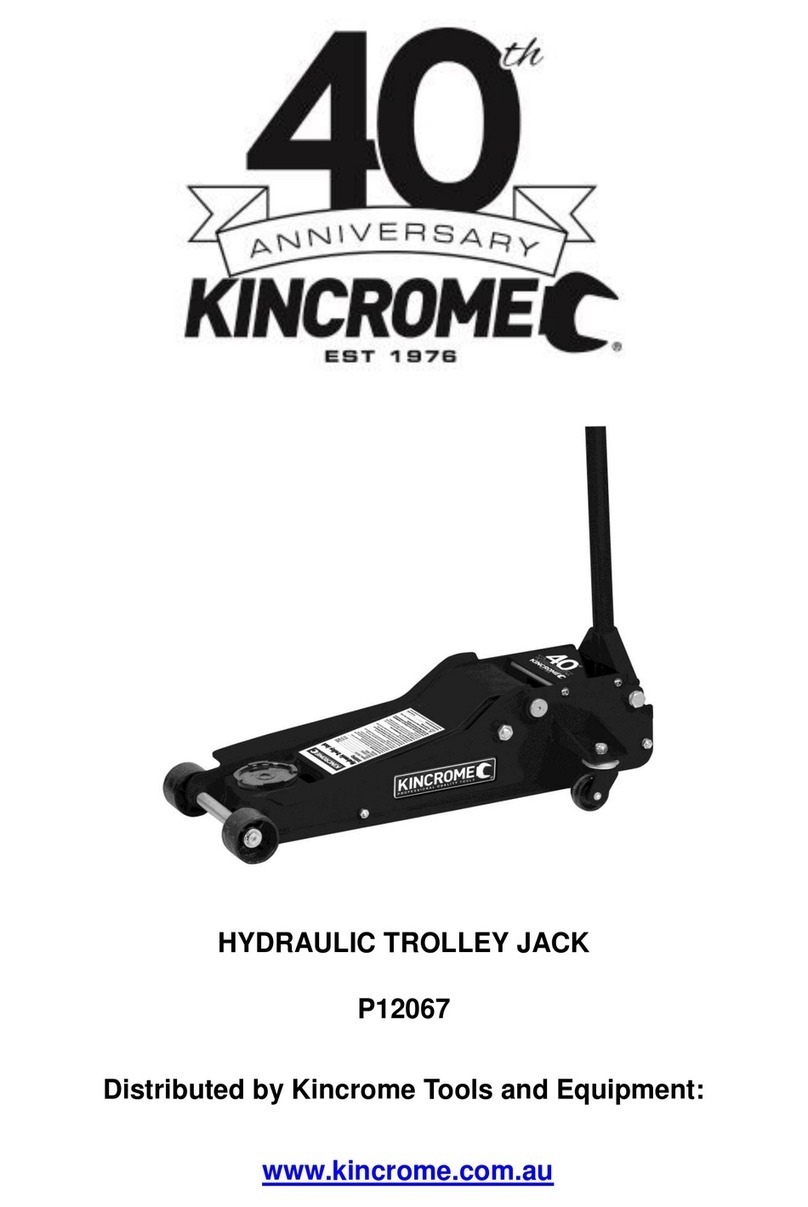
4
Important Safety Instructions
Save all warnings and instructions for future reference.
WARNING! Read all safety warnings and all instructions. Failure to follow the warnings and
instructions may result in serious injury and/or death.
The use of a vehicle jack has inherent dangers to avoid risk of personal injury or property damage make sure you are fully
aware of the operating instructions for this product, the recommendations in the vehicle owners manual for jacking of your
vehicle prior to lifting the vehicle. Do not exceed maximum lifting capacity of this jack. This jack is intended for automotive
use only. Be aware that large or heavy vehicles may exceed jack’s stated capacity check vehicle owners manual or contact
the vehicle manufacturer. Do not use for any other purpose except the raising and lowering of vehicles, never use to raise any
structure or building, Do not lift any human and never ride on jack.
Personal Safety
1. Stay alert. Watch what you are doing and use common sense when operating the jack. Do not use the jack while tired or
under the influence of drugs, alcohol, or medication. A moment of inattention while operating the jack increases the risk of
injury to persons.
2. Dress properly. Do not wear loose clothing or jewellery. Contain long hair. Keep hair, clothing, and gloves away from
moving parts. Loose clothes, jewellery, or long hair increases the risk of injury to persons as a result of being caught in
moving parts.
3. Do not overreach. Keep proper footing and balance at all times. Proper footing and balance enables better control of the
jack in unexpected situations.
4. Use safety equipment. A dust mask, non-skid safety shoes and a hard hat must be used for the applicable conditions.
Preparing Work Area
Before using jack to lift vehicle, it is important to prepare work area properly. Follow this procedure each time the jack is
used to help prevent property damage and or serious injury.
1. Plan location of jack beneath vehicle, making sure jack will be contacting only a jack support area of vehicle.
2. Clear obstructions from work area. Working in tight or cluttered work areas is dangerous.
3. Clear children and others from work area before moving or lifting vehicle. Another adult should be nearby for extra
safety and assistance but must be clear of vehicle as it is moved or lifted.
4. Conduct a pre-operational check of the equipment. Thoroughly inspect jack for damage or wear before each use.
5. Briefly test operation of unvehicled jack before using to lift any vehicle. If jack is damaged or is malfunctioning
DO NOT LIFT ANY VEHICLE until the problem is corrected.
6. The Vehicle manufacturer’s owner’s manual should be consulted prior to the lifting of the vehicle. It will advise safety
precautions, jacking procedure, vehicle weight, recommended jack type, and location of jack support areas on vehicle.
NEVER EXCEED WORKING VEHICLE LIMIT OF JACK.
7. The hydraulic vehicle jack should be used for lifting and lowering only; the raised vehicle should be supported on suitably
rated vehicle support stands, and the hydraulic trolley jack support stands (not included) and the hydraulic trolley jack
removed, prior to commencement of work on the vehicle. Vehicle support stands (not included) will be needed to support
vehicle once it is in raised position. Read and understand jack stands manufacturer’s instructions and safety information before
use and before lifting the vehicle with this jack.
8. Be sure jack and vehicle are on solid, level ground such as paved or concrete driveway or garage floor. The jack should
be used on level firm ground wherever possible. Uneven or sloped surfaces create hazardous working conditions and
dangerously impede the function of the jack. Ensure the jack is free to roll during lifting and lowering.
9. No person should remain in a vehicle that is being lifted. No person should enter a vehicle which is supported by a jack
or by vehicle support stands. No person should lean into a vehicle which is supported by a jack or by vehicle support
stands.
10. No person should place any part of their body under a vehicle that it supported only by a trolley jack.
11. With vehicle in proper position, set vehicle’s parking brake or emergency brake and put gear-shift in park (manual
transmissions should be placed in 1st gear). Twist VEHICLE IGNITION OFF AND TO THE “LOCK” POSITION making sure
steering wheel locks.
